

William Stopford
The cars axed in 2025 that we'll miss the most
16 Hours Ago
Kia's tiny tot Picanto has been refreshed with a new design and a heap more safety tech to make a stronger case against the MG 3.

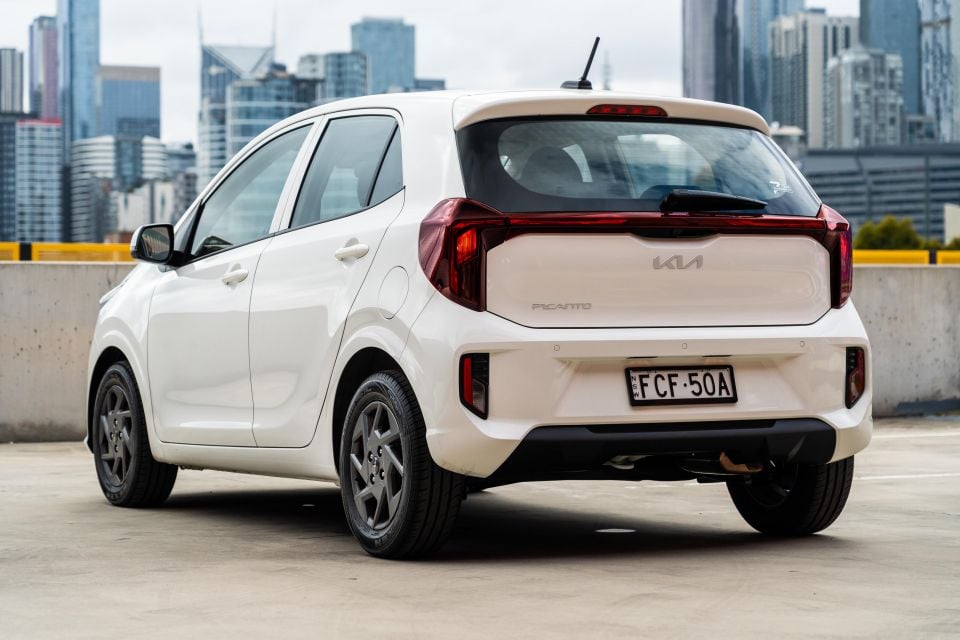

Quickly see how this car stacks up against its competition. Select any benchmark to see more details.
Where expert car reviews meet expert car buying – CarExpert gives you trusted advice, personalised service and real savings on your next new car.
Australia’s once-cheapest new car is… once again Australia’s cheapest new car.

Note: This article is based on our most recent review of the Kia Picanto, as there have been no major changes to pricing or specification since its publication.
We have updated key details such as pricing and specifications with the most up to date information available.Read the latest price and specs article here for all the details.
WATCH: Paul’s video review of the 2021 Kia Picanto S
The Kia Picanto was for a long time the entry point into the new-vehicle market, but after its most recent update the pint-sized micro-car then lost the title to the previous-generation MG 3, which is now in runout. However, the new MG 3 is a lot pricier, handing the mantle of Australia’s cheapest new model back to the Kia.
As the entry point into the Korean brand’s lineup, the Picanto packs in heaps of new and desirable features to justify the $1700 price increases, going heavy on the type of active safety tech the MG lacks.
The Picanto retains both manual and automatic transmission options, as well as a two-variant range structure to offer more choice than most models at this end of the market. Here we’re trialing the cheapest one – is it the pick?
Here we have the most affordable Picanto on sale – the Kia Picanto Sport – which starts from $20,690 drive-away with a five-speed manual transmission, as tested.

| Model | Drive-away pricing |
|---|---|
| Kia Picanto Sport 5MT | $20,690 |
| Kia Picanto Sport 4AT | $21,690 |
| Kia Picanto GT-Line 5MT | $22,490 |
| Kia Picanto GT-Line 4AT | $23,490 |
To see how the Picanto compares with its rivals, check out our comparison tool.
Buy your new car without the stress. It's fast, simple and completely free.

Great service from Travis and team, second time I have used this business would not hesitate to recommend them to anyone
Craig C.
Purchased a Ford Ranger in Sunshine Coast, QLD
CarExpert helped Craig save thousands on his Ford Ranger, now let us save you on your next new car.
Find a dealChanges in the cabin are a little less dramatic than the exterior, but there are quite a few upgrades here.
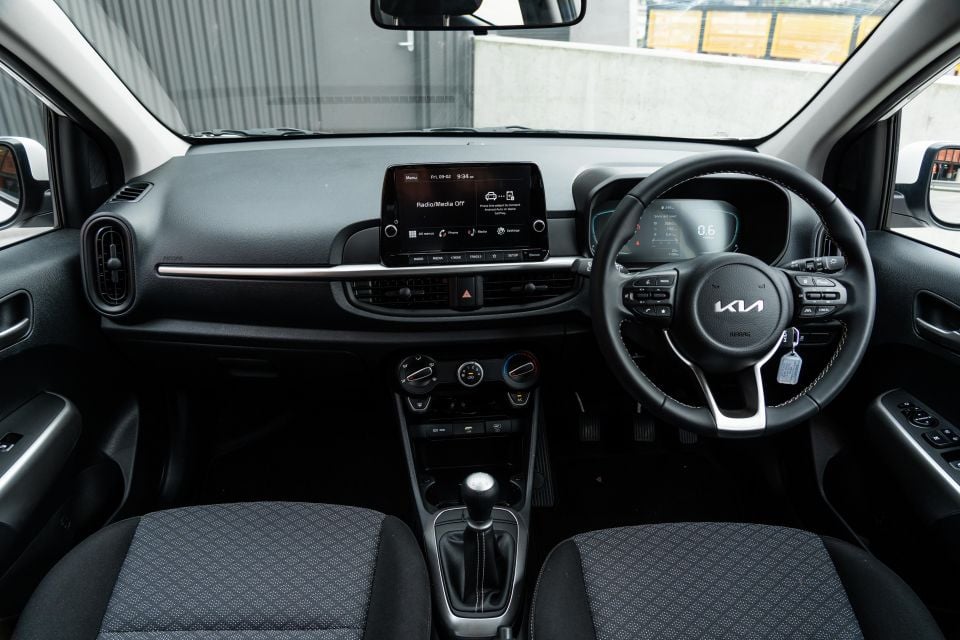
The fundamentals are the same but there are small changes like a new LCD instrument cluster that is more neatly integrated into the binnacle than the old analogue dials, and the seat fabric has been updated.
Smaller details include the inclusion of USB-C charge ports, as well as additional buttons on the steering wheel and to the right of the driver’s knee for applicable safety systems that have been added with this update.
Oh, and the steering wheel is now trimmed in ‘premium’ leatherette as standard, as is the gear shifter.
The jump from the old S to the Sport is roughly $1700, but there’s definitely a more upmarket vibe to various points of touch and interaction, as well as the more fulsome tech suite that also helps justify the price hike.
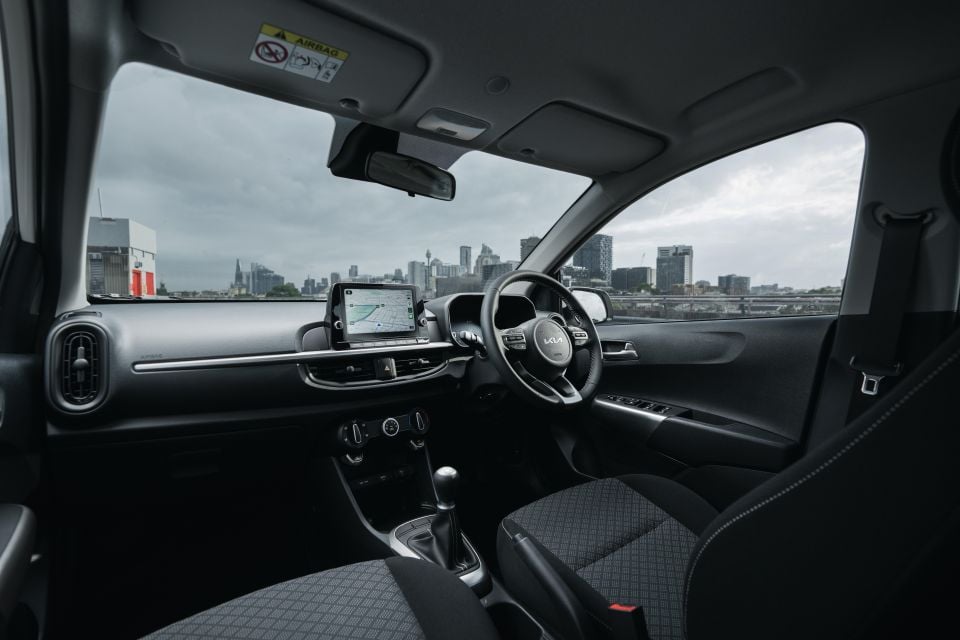
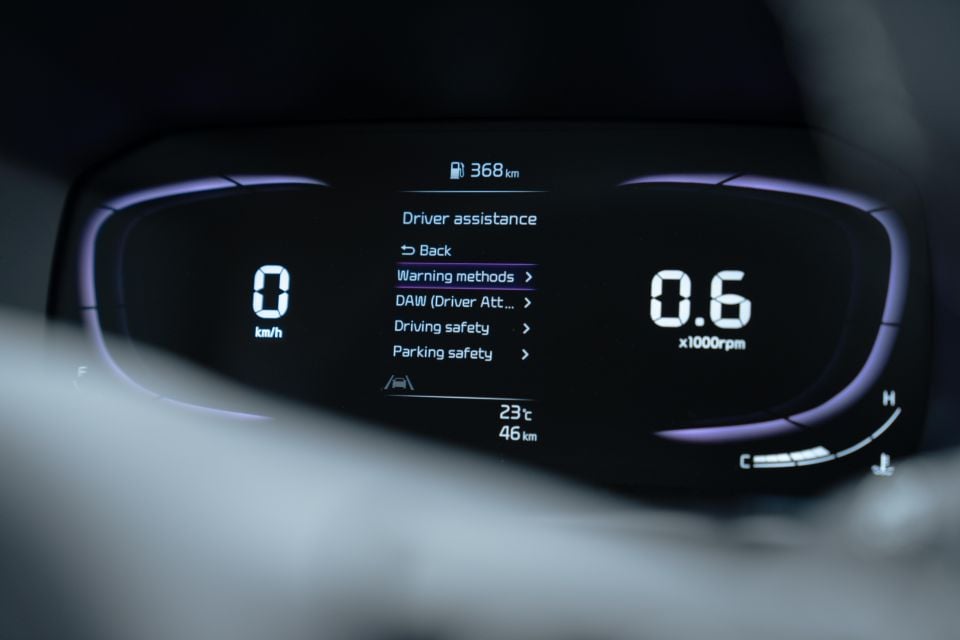

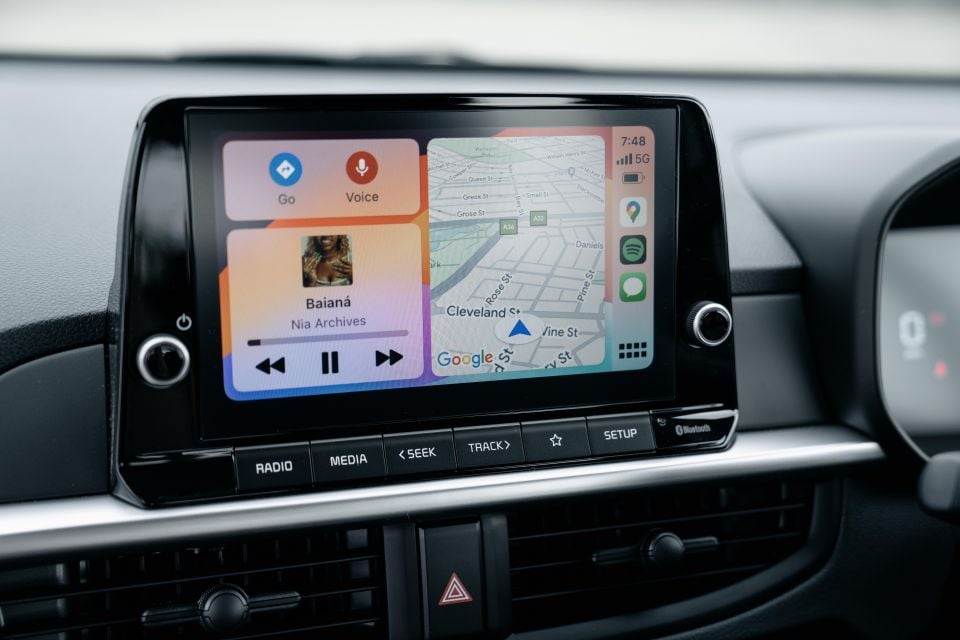
It’s all still quite basic and austere, but it’s functional and attractive enough given the price point.
The freestanding 8.0-inch touchscreen offers wireless Apple CarPlay and Android Auto, which actually works properly now compared to older iterations, and the manual air-con is surprisingly powerful as I found out on a hot summer day.
Storage is good thanks to a dual-tier shelf under the dashboard, augmented by 12V, USB-A and USB-C ports, as well as adjustable cupholders and an open tray in the centre console.
Everything is also ergonomically placed and positioned, with the centre stack angled slightly towards the driver and everything well within arm’s reach – just don’t go looking for soft plastics, because there are none.
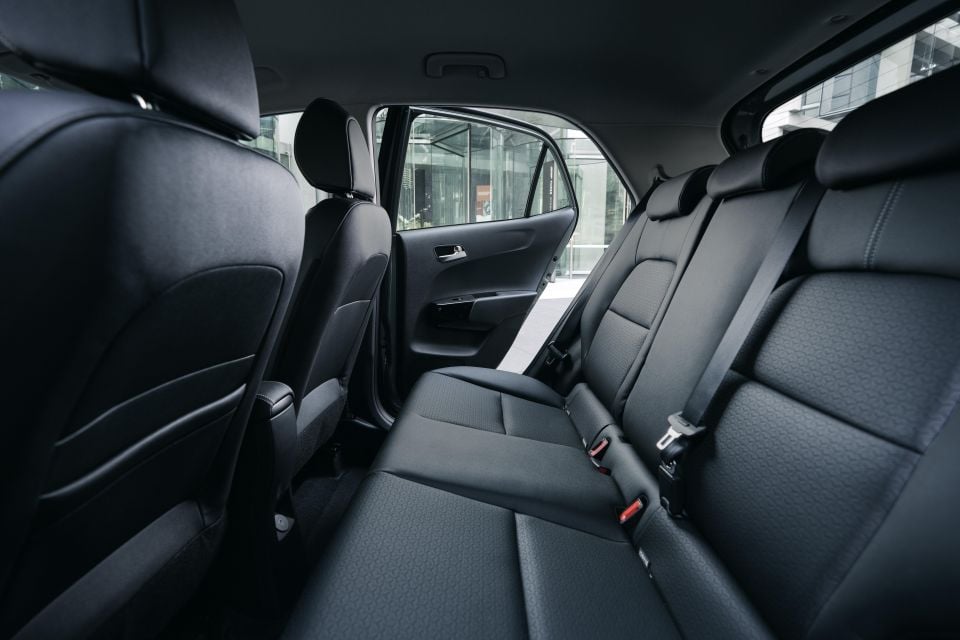
The back seat continues to surprise, given you can actually fit real people there despite the Picanto’s tiny dimensions.
I managed to fit two of my friends in the rear with minimal complaints. The Picanto’s tall and boxy proportions mean even someone my height (6’1″) can snugly fit – a longer road trip might be pushing it with regular use though.
Being a budget city-car, there aren’t a whole lot of back seat amenities here. You get the requisite ISOFIX child seat anchors on the outboard seats as well as top-tethers across all three, but there are no air vents or folding centre armrest.
In fairness, that’s to be expected of a vehicle in this segment, but worth calling out if you’re planning to use the second row somewhat often.
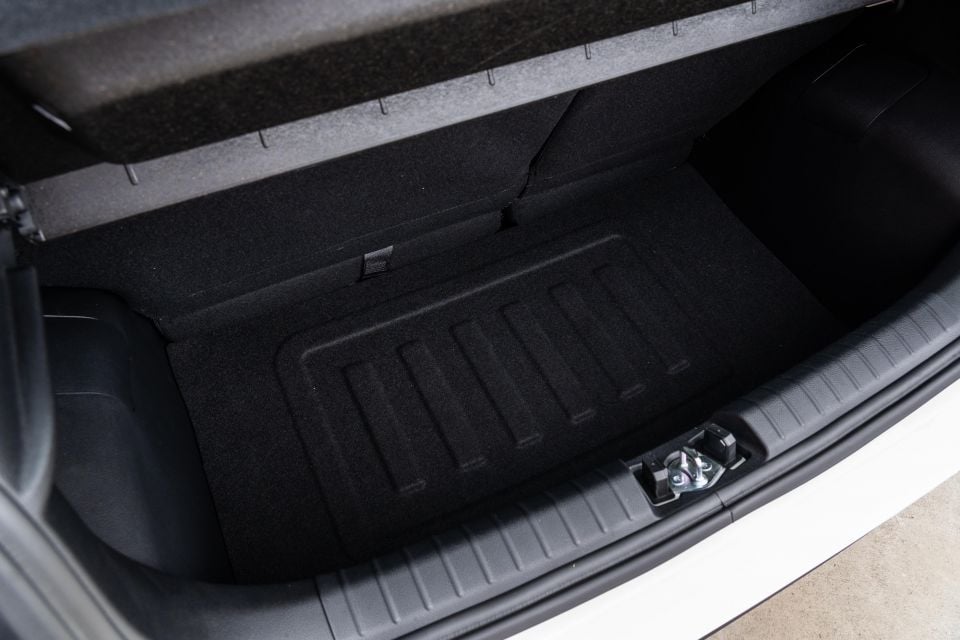
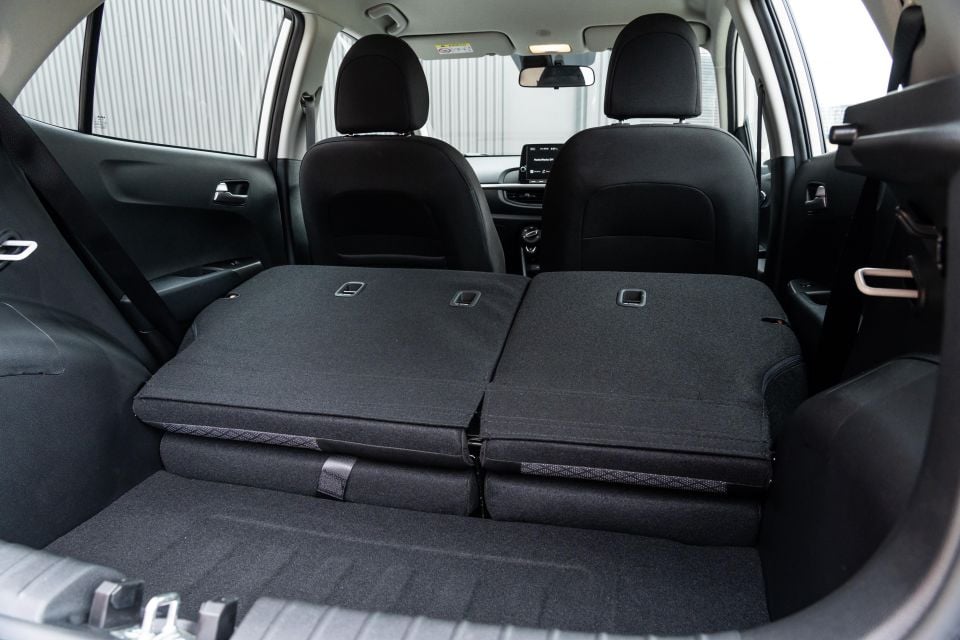
Behind those rear seats there’s 255 litres of cargo capacity, which can be expanded to 1010 litres with the rear seats folded. That’s more than a Mazda 2 Hatch (250L) or Suzuki Swift (242L), which is impressive given the Picanto’s smaller size.
There’s a pretty big step up from the boot floor to the seat backs, though. All versions of the Kia Picanto feature a temporary space-saver spare wheel.
| Dimensions | Kia Picanto Sport |
|---|---|
| Length | 3595mm |
| Width | 1595mm |
| Height | 1485mm |
| Wheelbase | 2400mm |
| Cargo capacity | 255 litres – seats up 1010 litres – seats down |
To see how the Picanto compares with its rivals, check out our comparison tool.
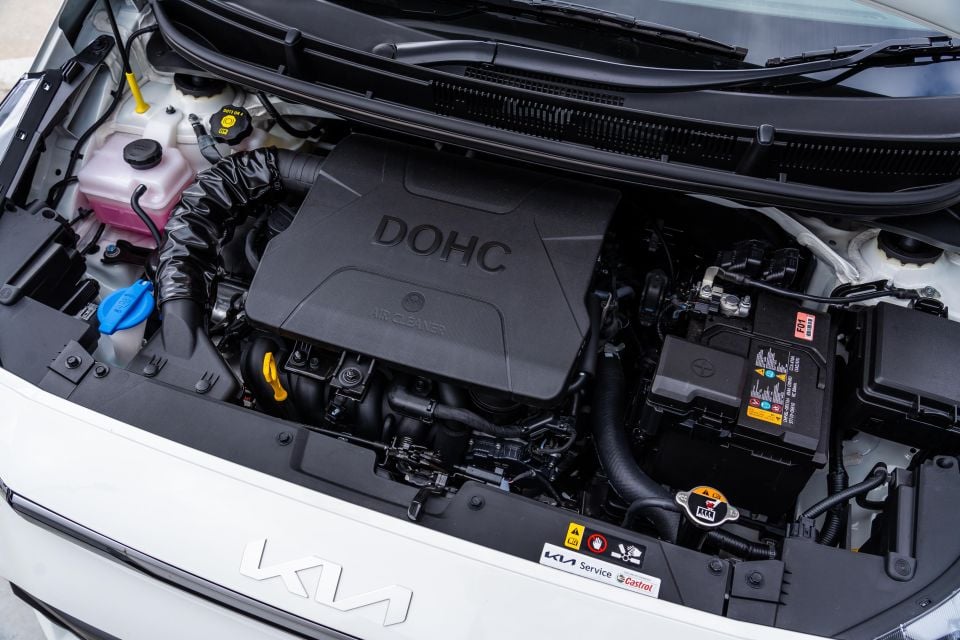
| Model | Picanto 1.25 MPI |
|---|---|
| Engine | 1.25L 4cyl petrol |
| Power | 62kW (6000rpm) |
| Torque | 122Nm (4000rpm) |
| Transmission | 5-speed manual |
| Driven Wheels | Front |
| Weight | 976kg (tare) |
| Fuel economy (claimed) | 5.4L/100km |
| Fuel economy (as tested) | 6.0L/100km |
| Fuel tank | 35 litres |
| Minimum fuel requirement | 91 RON |
To see how the Picanto compares with its rivals, check out our comparison tool.
The bulk of Picanto buyers opt for the dearer four-speed auto, so it’s great that Kia Australia has kept the five-speed manual on sale.
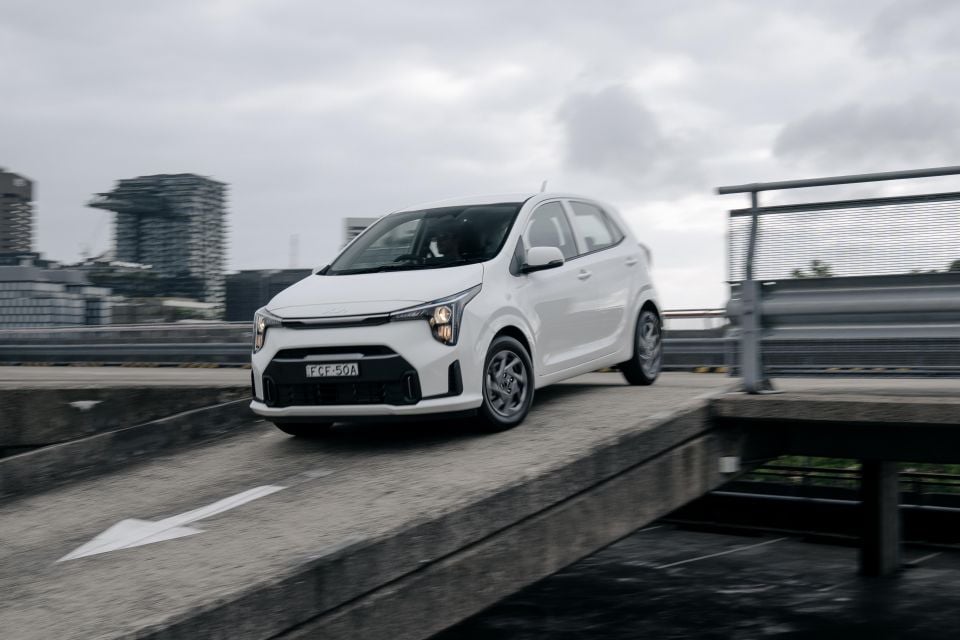
Why? Well, for starters manuals are becoming harder and harder to find these days and, for a lot of younger motorists buying their first car, this could be a great way to get into an affordable new car and also practice ‘driving stick’.
It also gives you more control and an added ratio for the pretty basic and meek 1.25-litre petrol engine, which is now the sole powertrain given the 1.0-litre three-cylinder turbo mill from the outgoing range has been axed.
With just 62kW of power and 122Nm of torque on tap, this little Kia is no pocket rocket – especially when peak torque doesn’t come online until 4000rpm. However, this mini-car only weighs 976kg, so you can get it moving if you need to push it.
I haven’t driven an atmo manual for a while, so like me you might find you have to row through the gears a lot to keep the Picanto on the boil. It’s more involving and helps you really get in touch with what the car’s doing, but it can also be quite tiresome in stop-start city traffic.
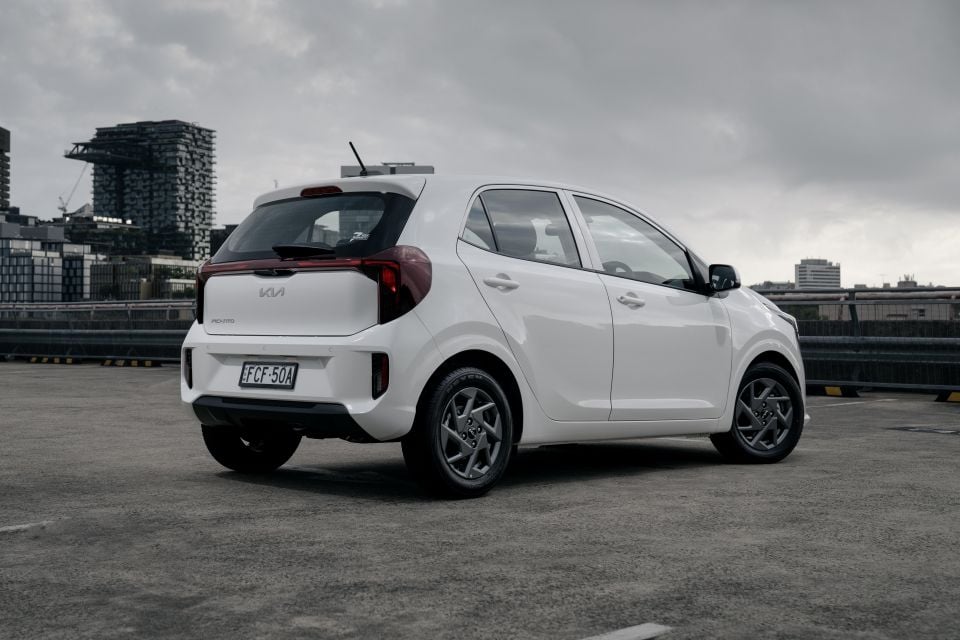
The Picanto has a very light clutch and an almost wobbly shift action, which early on might be a little jarring, but you soon learn to embrace the charm that comes with driving this little unit around town.
It revs out willingly and is fairly responsive, but I’d ignore the shift indicator in the cluster because it encourages you to change gears at around 2000rpm, which is never going to work in hilly conditions. Keep in mind you don’t get peak torque until 4000rpm and peak power until 6000rpm.
While the new ‘basic’ digital instrumentation looks neat in the driver’s binnacle, I feel this is a step backwards for the manual as it’s difficult at times to gauge how many revs you have on board on take-off and how quickly the tacho is rising on the clock radio-style display.
Further, the vague clutch and shift actions can mean it’s very easy to over-rev the Picanto on takeoff and between gearshifts. Having hill start assist definitely helps when setting off on an incline.
It handles well too. That chunky leatherette-trimmed steering wheel and accurate steering calibration make this quite a fun little thing to punt around city streets.

It rides pretty well to boot, erring on the firmer side but doing a good job of balancing comfort and dynamics. The Sport’s little 14-inch alloys and 175/65 tyres add a bit more cushioning than the GT-Line’s 195/45 R16s as well.
The Picanto is also surprisingly settled on the freeway for such a little car, helped by Kia Australia’s local tuning of the suspension and steering, perhaps as well as the fact the Picanto is sold in markets like Europe.
While it takes a heavy foot to get anywhere quickly, you don’t feel like you’re in some dangerous little buzzbox that’ll get blown away by passing buses and trucks. It’s surprisingly sure-footed and confident at 100 clicks.
Further, the five-speed manual’s long final ratio means it’s not spinning away at well above 3000rpm like it is in the four-speed auto. It just feels like it has longer legs in those scenarios.
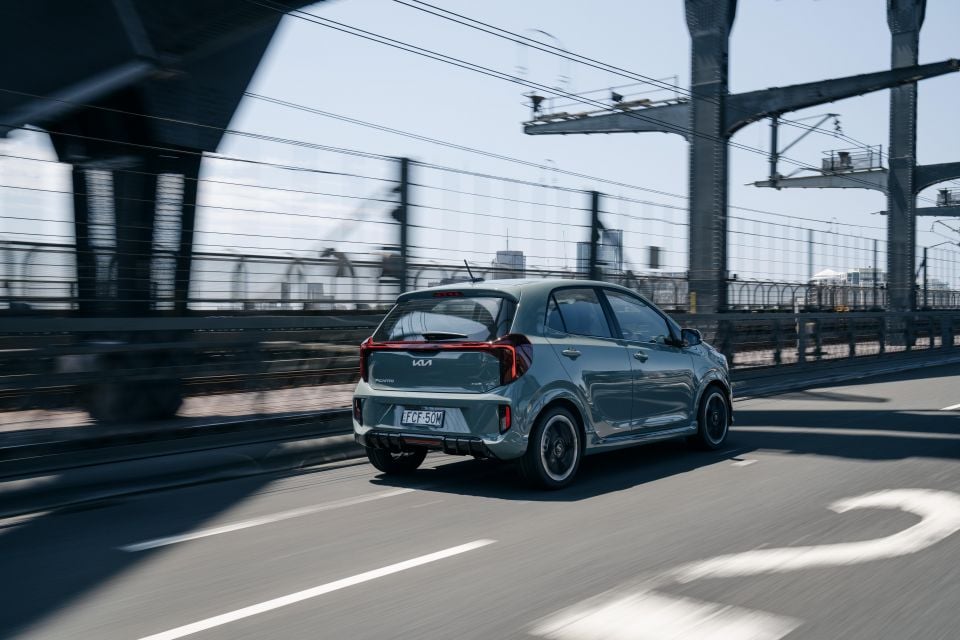
Unlike the MG 3, which lacks any form of modern active safety tech for now, the Picanto has a slew of modern assistance features that should not only help you on the road but also give parents peace of mind when their youngster set out to drive in this big scary world.
AEB, blind-spot monitoring and rear cross-traffic assist as well as lane keep assist all actively intervene to avoid collisions or drifting out of one’s lane. You also have Lane Following Assist, which will actively keep you centred in your lane, and it does so in an unthreatening way.
There’s also auto high-beam for the standard projector-type halogen headlights. Unfortunately, LED units are reserved for the GT-Line flagship. I can forgive this in the Picanto, but perhaps not models higher up in Kia’s range.
Note that Kia doesn’t offer the Picanto with a more sophisticated AEB system incorporating pedestrian and cyclist detection – nor adaptive cruise control – despite it being available in the Korean domestic market. Probably nitpicking for this particular variant.
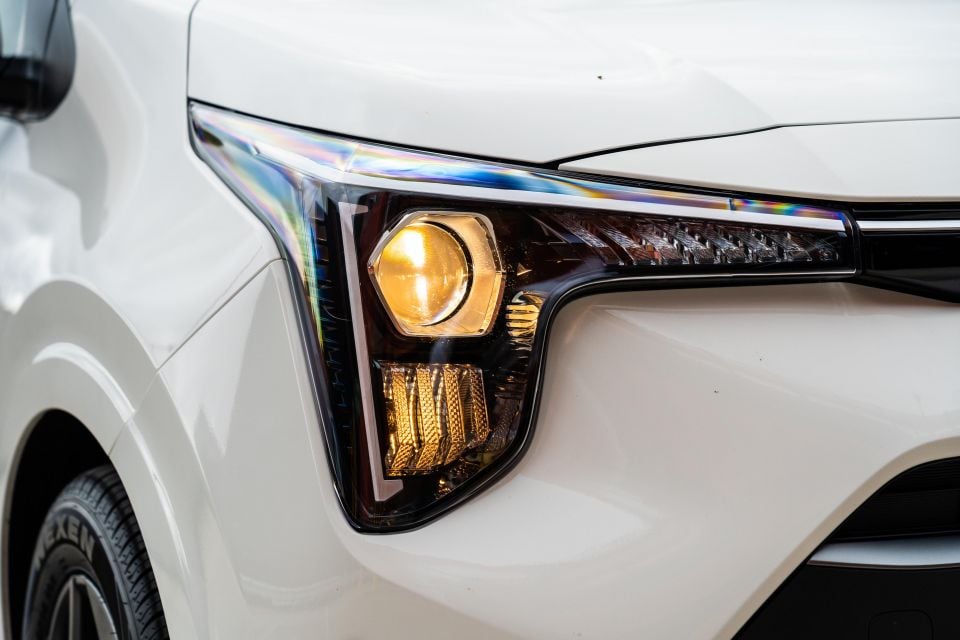
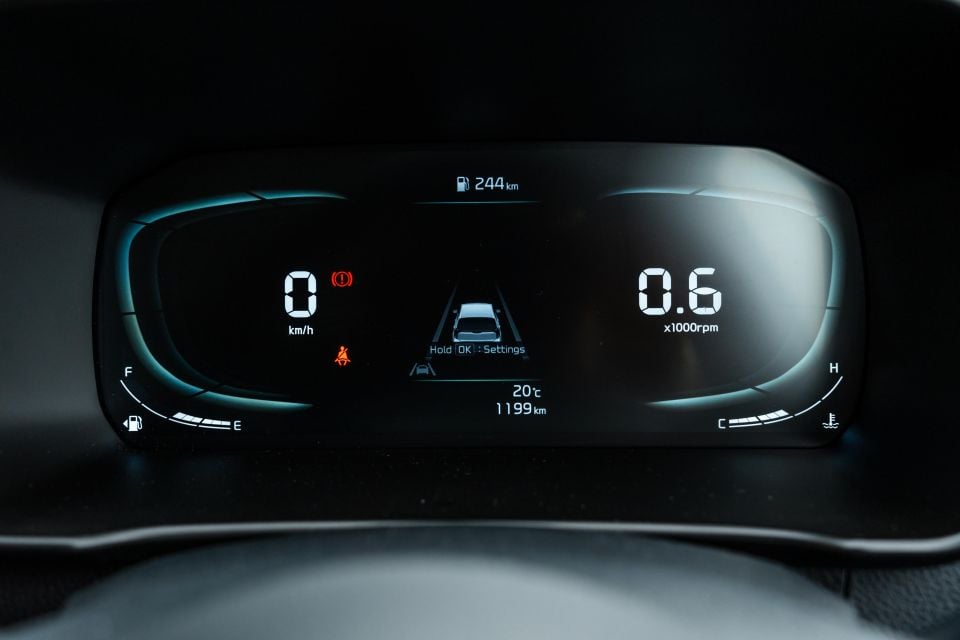
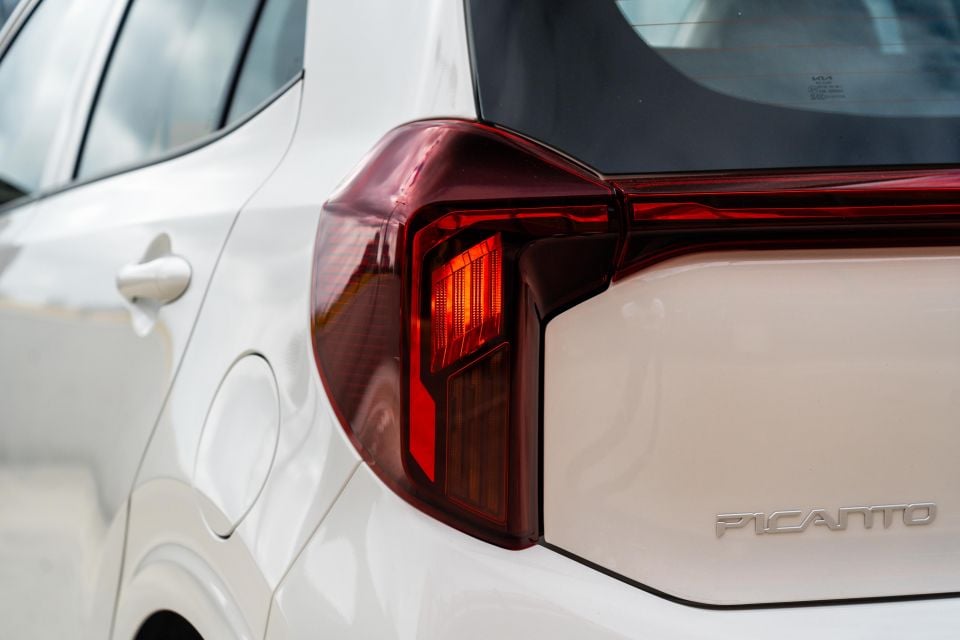
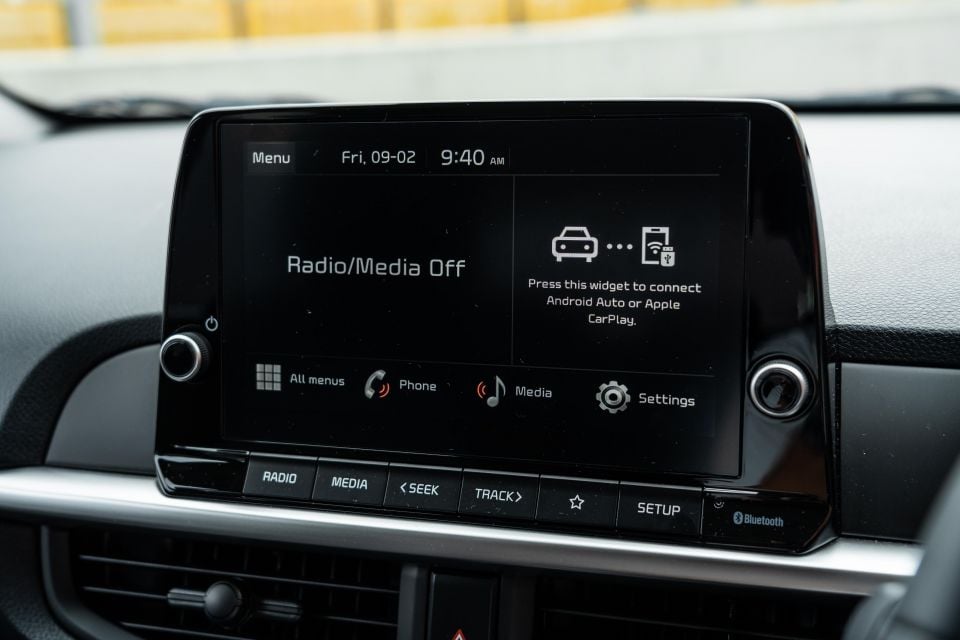
Picanto Sport highlights:
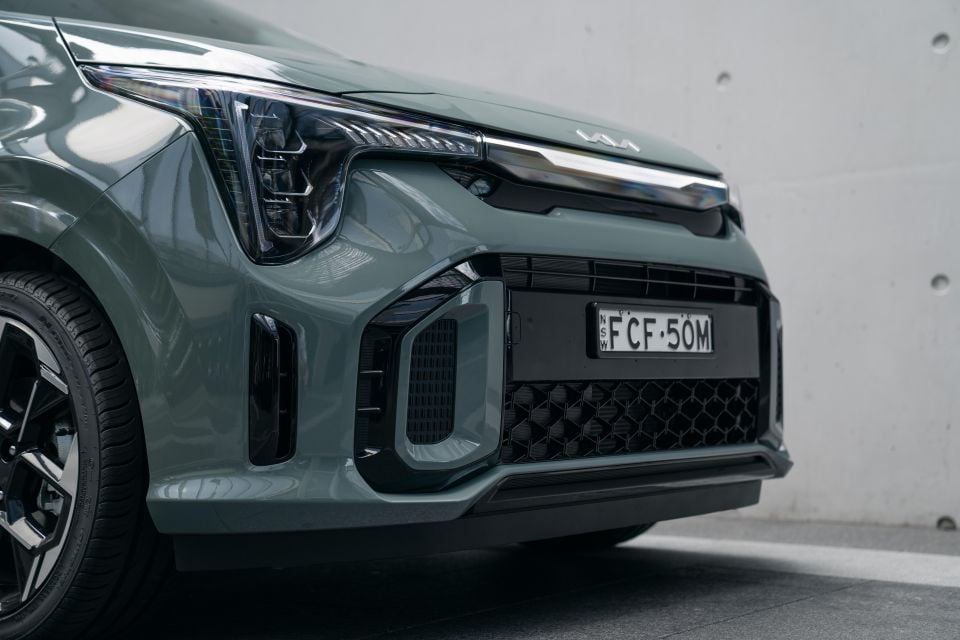

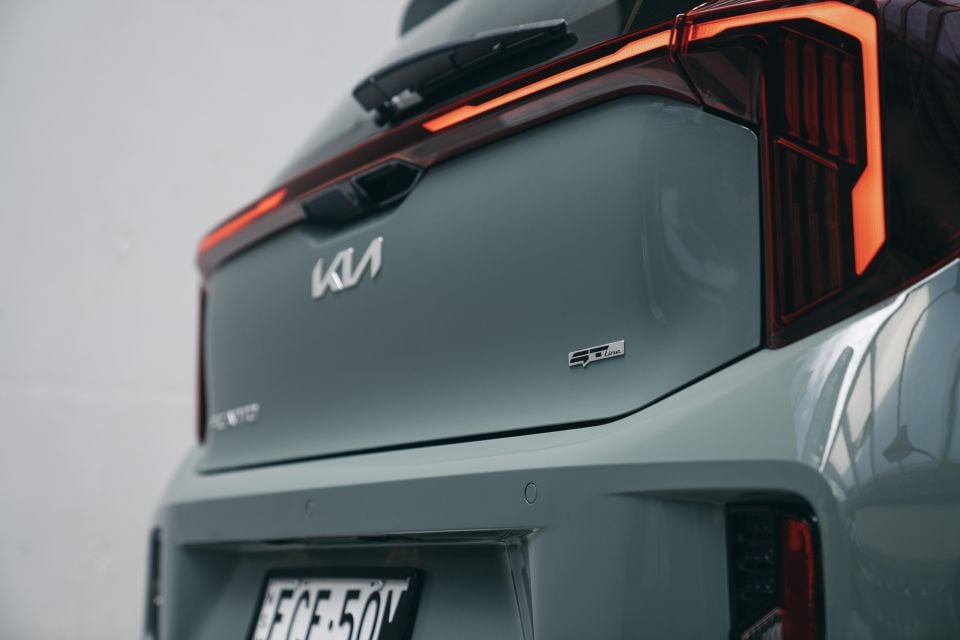
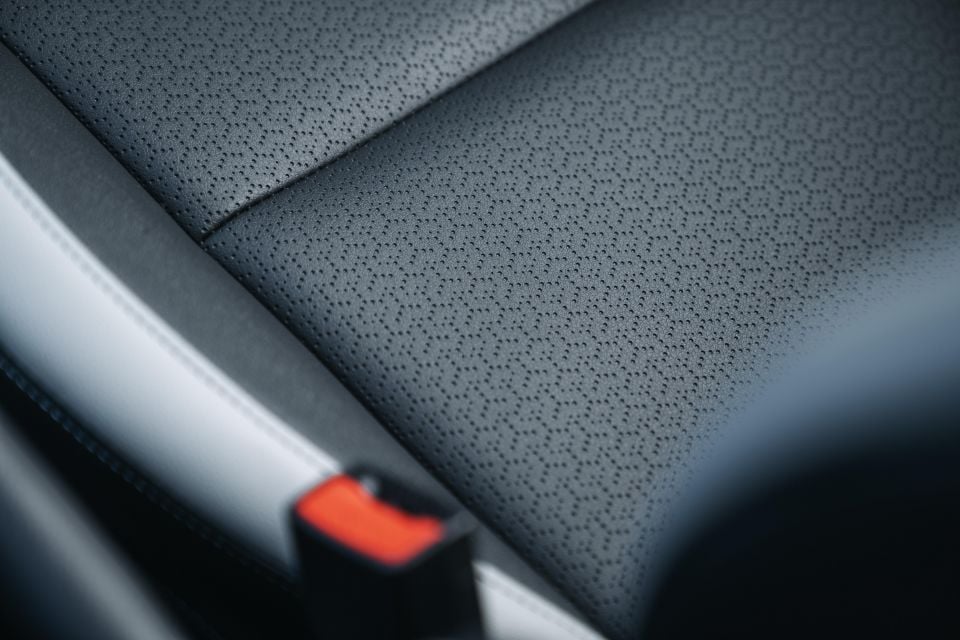
Where expert car reviews meet expert car buying – CarExpert gives you trusted advice, personalised service and real savings on your next new car.
Picanto GT-Line adds:
To see how the Picanto compares with its rivals, check out our comparison tool.
The Kia Picanto was awarded a four-star ANCAP safety rating based on 2017 Euro NCAP tests, but that rating expired on January 1, 2024.
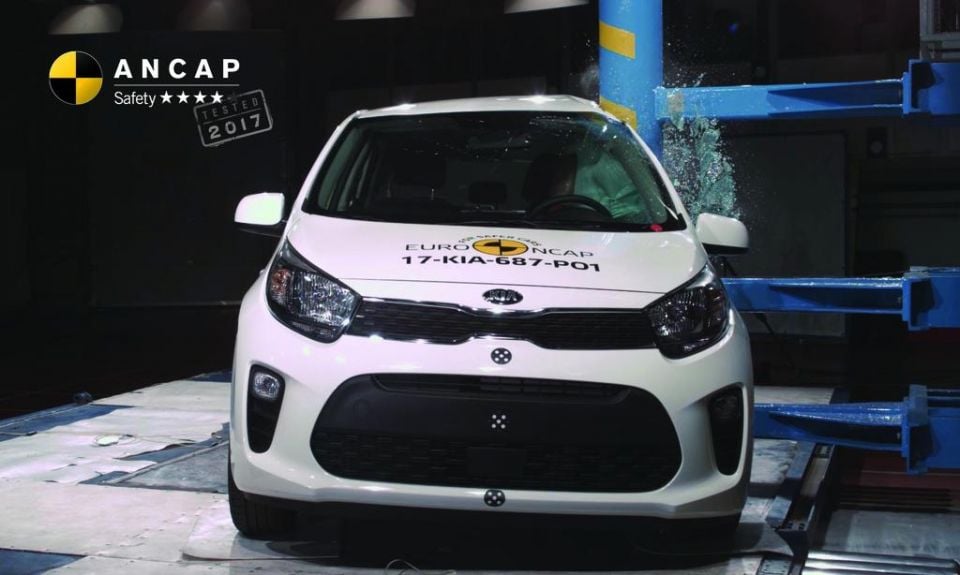
| Category | Kia Picanto |
|---|---|
| Adult occupant protection | 87 per cent |
| Child occupant protection | 64 per cent |
| Vulnerable road user protection | 54 per cent |
| Safety assist | 47 per cent |
ANCAP and Euro NCAP noted that the Picanto’s child occupant and pedestrian protection scores fell under the thresholds required for a full five-star safety rating.
Standard safety equipment includes:
The Picanto is backed by Kia’s seven-year, unlimited-kilometre warranty.
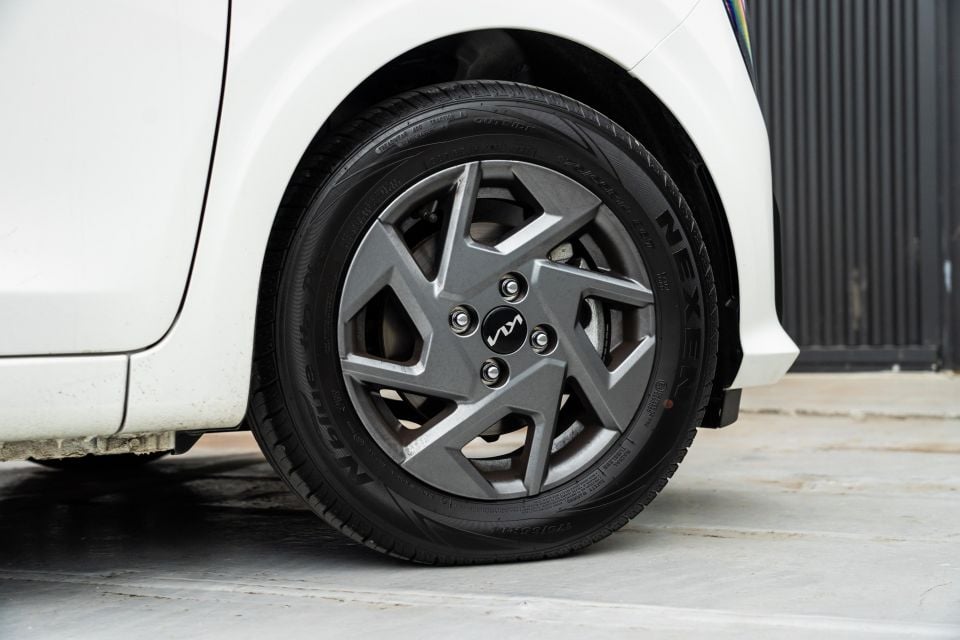
Like the Korean brand’s wider lineup, Kia offers seven years of roadside assistance and capped-price servicing for seven years; maintenance is required every 12 months or 15,000 kilometres.
| Running costs | Kia Picanto |
|---|---|
| Warranty | 7 years, unlimited kilometres |
| Roadside assistance | Up to 8 years |
| Service intervals | 12 months or 15,000 kilometres |
| Capped-price servicing | 7 years |
| Total capped-price service cost | $3069 – 7 years |
To see how the Picanto compares with its rivals, check out our comparison tool.
Australians love to buy the biggest and most expensive versions of most models, but for those more pragmatic buyers that take the “right size, right size” approach, the base Picanto has a lot to offer.
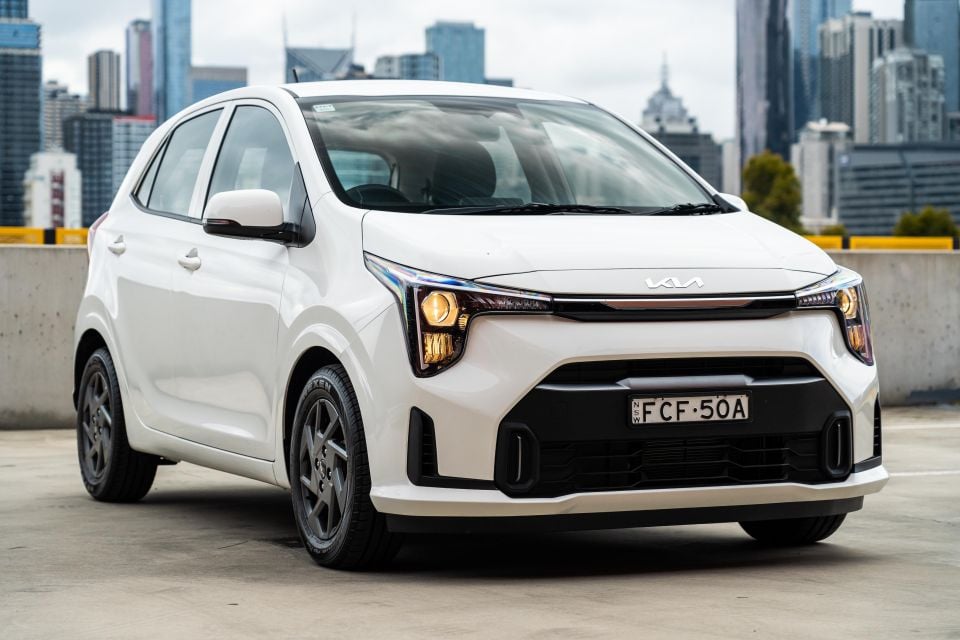
For just over $20,000 drive-away you have all the bases covered in terms of driver assistance and infotainment technologies, as well as a pretty economical and uncomplicated drivetrain that’s cheap to run.
Based on my real-world experience, you should be able to achieve over 550km between fills of the tiny 35-litre tank, which with 91 RON unleaded will make this one of the cheapest and most efficient ways to get around.
Props to Kia for decking out the new Picanto with active safety features like blind-spot and rear cross-traffic assists, as well as active lane centring. While some may argue “you shouldn’t have your license if you need these things”, it’s a great safety net that the young, old and everyone in between will appreciate if they ever need it.
You really don’t need to spend up for the GT-Line either, unless you really want the more premium aesthetics and LED lighting, because the fundamentals of this new Picanto Sport are more than solid enough for the coin.
Besides, if you’re in the market for properly budget motoring, there’s little else to choose from unless you buy used.

Interested in buying a Kia Picanto? Get in touch with one of CarExpert’s trusted dealers here
Click the images for the full gallery
MORE: Everything Kia Picanto
Where expert car reviews meet expert car buying – CarExpert gives you trusted advice, personalised service and real savings on your next new car.
James Wong is an automotive journalist and former PR consultant, recognised among Australia’s most prolific motoring writers.


William Stopford
16 Hours Ago


William Stopford
2 Days Ago


Damion Smy
6 Days Ago
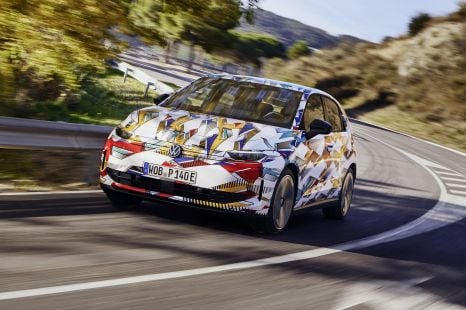

William Stopford
13 Days Ago
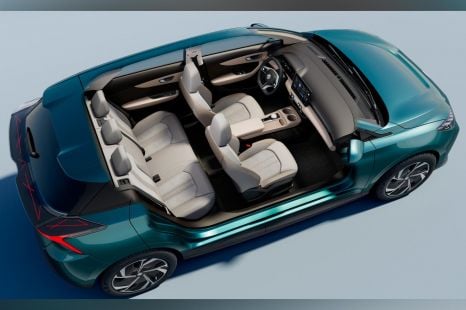

William Stopford
14 Days Ago
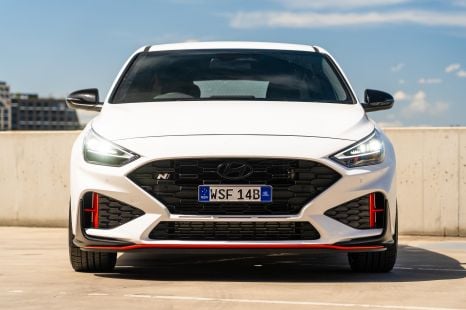

William Stopford
20 Days Ago